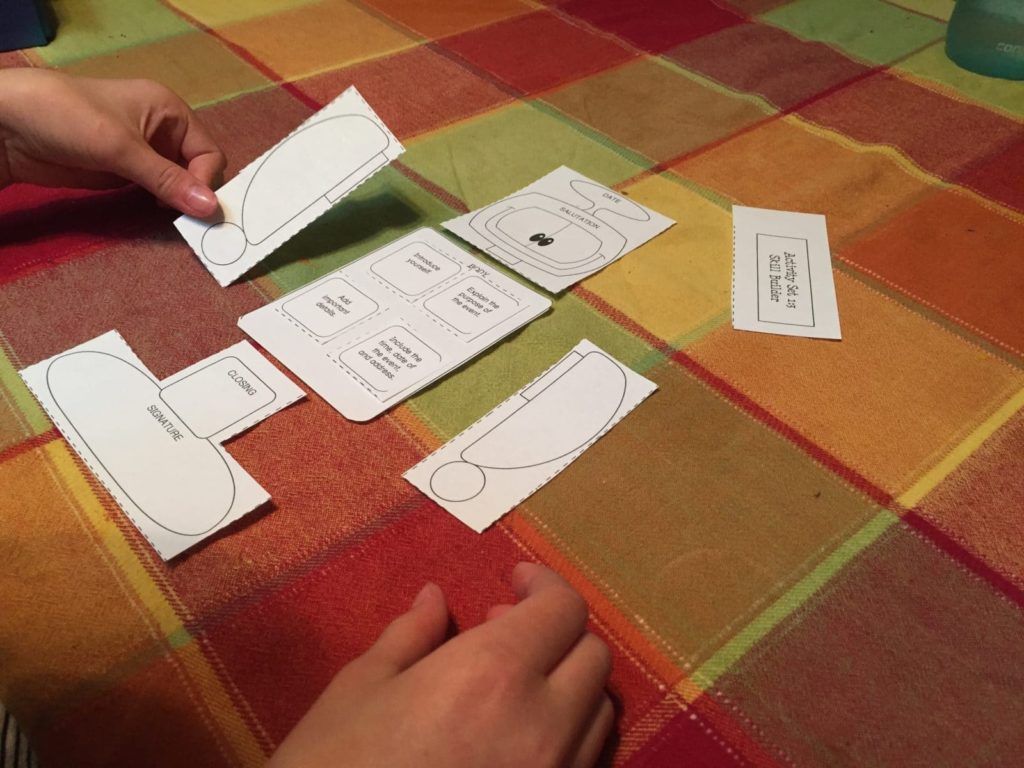WriteShop is full of hands-on projects and interactive activities that both hold my son’s attention and encourage this reluctant writer to write.

This post is a sponsored conversation on behalf of WriteShop. All opinions are my own.
I’ve been in a mini crisis over here because my 9 1/2-year-old isn’t reading and writing as well as I would like him to after several years of targeted intervention in those areas. It can be difficult to know whether a dyslexic child is truly struggling or if we’re pushing them too hard. Teaching reluctant writers and readers can be confusing!
Being a veteran homeschool mom doesn’t immunize me from struggles but my many years of homeschooling have taught me to expect bumps in the road and know that there are creative solutions out there. For reading, we signed our son up for a summer of educational therapy with our local NILD tutor. NILD combines the evidence-based Orton-Gillingham reading approach with a wide variety of working memory and processing tasks to strengthen those underlying areas of weakness.
For writing, we have been working slowly but surely through the WriteShop Junior, Book D writing curriculum. While there is no curriculum that is a perfect fit for all learners, WriteShop is so full of hands-on projects and interactive activities that I have very little adjusting to do to both hold my son’s attention and encourage this reluctant writer to write.
As a left-brained, linear thinker, it is tempting to think of hands on activities as ‘extra’ or even unnecessary. The truth is that these are the ways that our right-brained, creative types learn and remember!
Using Hands-on Activities and Dictation to Engage the Reluctant Writer
WriteShop includes a wide variety of hands-on activities and opportunities to narrate or dictate throughout each lesson.
Model and Teach: As the parent works through this part of the writing process, he or she models the new writing skill and the child is not required to write. I love that this part of the lesson is completely scripted. Teaching reluctant writers isn’t easy, so I appreciate having my hand held!
Pre-writing: Each WriteShop lesson introduces the new writing concepts with a pre-writing activity that is hands-on, and often verbal, so there isn’t any writing involved.

Skill building game from Lesson 1 – parts of a letter
Skill Builders: In this part of the lesson, worksheets, games, or other activities are used to introduce or give practice with the new writing skill.
Brainstorming: My son loves this part of the writing process. He struggles to write, but he has no trouble generating ideas. During this stage, he is encouraged to think creatively and use his imagination while I write all of his ideas on a whiteboard. This assistance, really helps him to form his ideas before setting a pen to paper.

Brainstorming activity lesson 1 parts of a letter
The Writing Project: Each lesson’s writing project is a culmination of the previous parts of the lesson. Kids are encouraged to write their ‘sloppy copy’ – a term my older kids have carried with them well past their WriteShop Junior days. And hey, what boy isn’t happy to create a sloppy copy or a sloppy anything for that matter!?
Smaller Steps and Flying Higher: Each writing project also includes ideas for both the reluctant writer or the accelerated writer in the Smaller Steps and Flying Higher section of the lesson. These ‘smaller steps’ include many of the accommodations I know work best with my struggling writers such as allowing dictation, creating posters, and creating word banks.
Editing and Revising: Parents walk and talk their kids through the editing process. I love WriteShop’s encouragement to look for words and sentences that are correct – the “Job Well Done” search – using checklists and the Fold-N-Go grammar guides for reference. My kids who struggle with writing need a lot of encouragement.

Writeshop Junior encourages the use of silly props while editing
Publishing the Project: This final step of the writing process has been a huge motivator for my struggling writer. Students are encouraged to publish their final draft in a fun and creative way. Our reluctant writer loves to share the polished final draft of his hard work by displaying it in a frame or lift-the-flap book or by presenting his funny story to our family.
So much of teaching a struggling learner is about encouraging them to persevere through difficulties. It is no wonder that kids resist writing when reading, writing, and spelling are hard. Finding the right tools to teach kids in an engaging, hands-on and interactive way can help motivate even the most reluctant of writers.
Visit the WriteShop website for more information and to purchase.








Thank you so much for sharing your resources! We are in our 2nd. year of homeschooling our 12 year old (dyslexic) son. The only thing he hates more than reading is writing!
We still have lots of days where I wonder if we are doing enough, but I honestly don’t think I could put him back into public school. By the time we pulled him out his self esteem was so low, it was heartbreaking.
Thanks for all that you are doing. ?
Our daughter is 13 and getting ready to start 8th grade. Her writing skills are pretty much nil. She is dyslexic and has a working memory deficit. If you ask her a yes or no question or an open ended question you’ll hear crickets. She is so bright, but when directly asked a question that is not fill in the blank, she cannot process it. There is so much creative thought put into writing even one sentence that she is having a very difficult time, and each assignment is met with tears. I think WriteShop may help, but do you have a suggestion as to which level to start? Would WriteShop Junior be a good fit for a 13 year old, junior higher? Or should we start with WriteShop I?